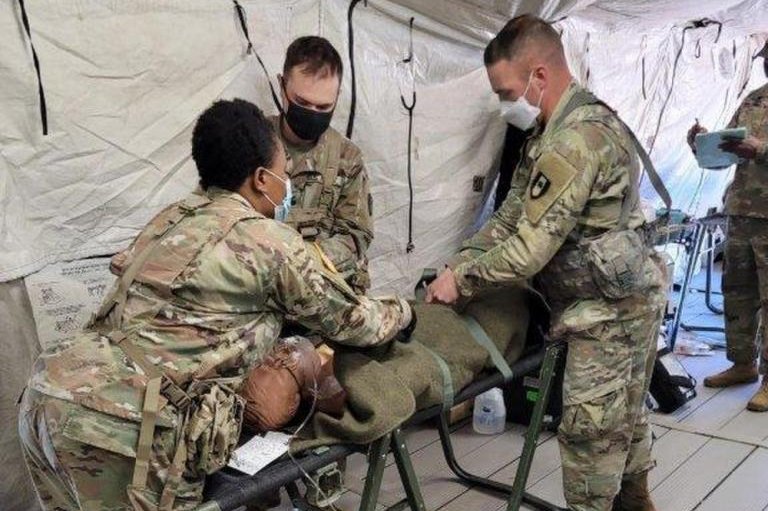Soldiers with the 36th Medical Care Area Support, 44th Medical Brigade at Fort Bragg, perform realistic medical scenarios during a Field Oxygen Generator Resource test. Photo courtesy of U.S. Army
March 18 (UPI) -- A new oxygen generator with a longer shelf life is being tested by the U.S. Army for combat casualty treatment, the branch announced on Thursday.
Army officials said the results of an operational test by the U.S. Army Medical Department Board in February using soldiers from the 44th Medical Brigade will determine whether the Field Oxygen Generator Resource is fielded by soldiers -- and that could happen as soon as this year.
"There is truth in operational testing. Army leadership uses the results from test events to facilitate risk-reduction for product fielding," Archie C. Kinnebrew Jr., lead test officer with USAMEDDBD, said in a press release.
The Field Oxygen Generator Resource is under consideration to replace the Oxygen Generator, Field Portable because of sustainability issues -- including shelf life and the length of time they can operate.
Two off-the-shelf systems are being considered and tested, according to Austin S. Langdon, assistant product manager with Warfighter Deployable Medical Systems, U.S. Army Medical Materiel Development Activity at Fort Detrick, Md.
"The old device was designed to operate 10-12 hours a day and 7 days a week. This is the case for most portable Oxygen Concentrators on the market. However, when the device sits on a shelf, maintenance issues arise from lack of use, which are very costly," Langdon said.
One of the two systems could be stored for as long as three years without needing maintenance -- meeting one of the Army's major requirements, and an advance from the device currently in use.
Among the issues with the OGFP is that it is susceptible to humidity and has to be run once a month, even in storage, as part of basic maintenance for the devices, the Army said last June.
While both systems being tested are already in production, the Army needs to replicate conditions the machines could be used in, testing them for airworthiness and environmental considerations, and to understand the limits of their capabilities.
"The test articles under consideration will not only be evaluated by the testing community, but will also include input from the intended end-users on the battlefield. These test events ensure that Soldiers have a voice in the acquisition and deployment of new and improved systems," Kinnebrew said.
If one of the two systems under consideration is chosen by Army officials, Langdon said it would "be fielded to the force this year."















